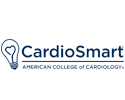Attacking All Angles of Alzheimer’s
Editor’s Note: This article originally appeared in Biotech Primer Weekly.

Emily Burke, BiotechPrimer.com
Alzheimer’s disease ranks as one of the toughest nuts to crack within drug discovery and development. Current treatments merely manage symptoms, so finding a better solution becomes more and more urgent as the aging population grows.
The pathology most commonly associated with Alzheimer’s disease (AD) is the buildup of amyloid-beta (Aβ) plaques in the brain. Recent research from Stanford University suggests the plaques bind to a receptor on nerve cells, disrupting their function. However, there is no absolute consensus that these clumps of protein are the origins of AD or a symptom of the underlying cause.
Most experimental drugs have focused on “mopping up” or inhibiting the production of Aβ plaques. Failures in early clinical trials dominate the treatment landscape, with a few potentials in the pipeline (aducanumab in Phase III). In the race to find a cure, every possibility offers a glimmer of hope, so let’s shine a light on the developmental drugs stepping away from Aβ plaques.
Loss of Neurons
A key clinical feature of AD patients is the loss of neurons. What if there was a therapy that could jump start the development of new neurons? Two companies are leading the charge in developing small molecule activators of neurogenesis. By screening large chemical libraries, they have identified various compounds that show promise in activating neurogenesis from adult neural stem cells, both in tissue culture and in mouse models.
In a mouse model of Alzheimer’s, compound NNI-362 promoted the growth of new hippocampal neurons that not only migrated to the correct functional location but also differentiated and survived long enough to reduce the previously observed cognitive declines. The hippocampus is thought to play a role in memory formation and spatial navigation and is one of the first regions of the brain to show damage in AD. Phase I trials for NNI-362 are currently in preparation.
Another neurogenesis candidate, NSI-189, increased the hippocampal region of mouse brains by as much as 20 percent. Phase I trials for NSI-189 were recently completed for major depressive order, with an aim to branch out to Alzheimer’s disease in the future.
Engineering Yeast Cells
Rather than directly targeting Aβ plaques, one group of researchers is working to identify their roots. By engineering yeast cells to produce the Aβ protein, this research is monitoring the detrimental downstream effects of over-expression — like the disruption in the folding of other essential cellular proteins. Compounds that show promise in the yeast cells are then tested in AD patient-derived cells to screen for potential drugs. The sponsor is currently preparing to begin clinical trials with its lead compound.
Neuroinflammation
Another company is bypassing Aβ plaques altogether and going after neuroinflammation. This pathway grew out of research conducted at Stanford, suggesting that a protein known as c1q is present in higher levels in the brains of AD sufferers. C1q accumulates at neuronal synapses, the key points of communication between brain cells. C1q also acts as a flag for other immune cells like macrophages — these “big eaters” chomp up cellular debris. The correlation of c1q could account for the observed reduction in synapse numbers and the accompanying loss of cognitive function seen in AD. The sponsor’s lead candidate, now in preclinical development, is a monoclonal antibody which “mops up” excess c1q.
Proteasomes
A partnership between two sponsors is targeting AD-associated protein aggregates by activating a cellular component known as the proteasome. Proteasomes get rid of damaged proteins and dysfunctional protein aggregates by dismantling the peptide bonds holding them together. USP14 is one of the proteins that inhibits the proteasome, so this work is focused on the preclinical development of a USP14 inhibitor to allow proteasomes to be fully activated in AD patients.
Attacking Alzheimer’s from all angles is the surefire way to get closer to better treatments and a real cure.


















